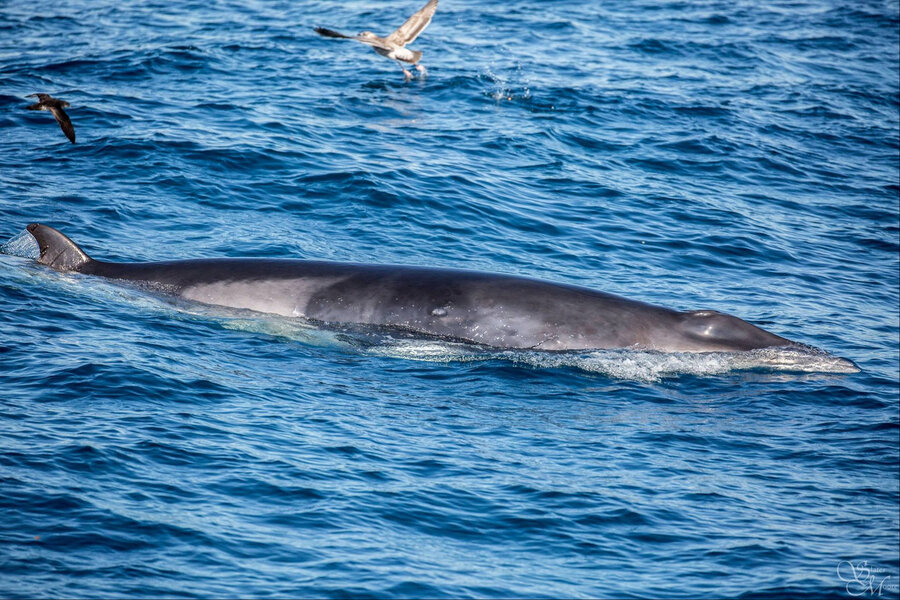Entangled whale found off California coast just one of many, say experts
Loading...
A humpback whale off the coast of Los Angeles swam free Saturday after spending two days entangled in hundreds of feet of fishing line.
The entangled whale, thought to be between between 35 and 50 feet long, was spotted Friday 45 miles south of Los Angeles, along the Orange County coast. Rescuers from the National Oceanic and Atmospheric Administration (NOAA) were able to remove 150 feet of rope, but the whale soon became agitated and dove deeper, preventing further removal.
When rescuers resumed their efforts Saturday, a SeaWorld team cut over 230 feet of trap line off of the whale, leaving only some line in its mouth that they were unable to reach. But even though there may be little rope left, the line that remains could inhibit the whale's feeding.
“We need to be realistic with regards to the ultimate outcome for this animal,” Dave Koontz, a SeaWorld spokesman, told NBC News. “While a significant amount of line was removed from the whale yesterday and today, there is still line in its mouth."
Experts say this case highlights a growing trend of whale entanglement.
In April 2015, The Center for Biological Diversity reported a record number of entanglements off the US Pacific coast last year. Of the 30 individual cases, a number twice that of the previous year, experts believe only seven of these whales survived.
Many more cases go undetected. As The Christian Science Monitor reported Saturday, “more than 300,000 whales, dolphins and porpoises die as bycatch every year, either from drowning or from the injuries sustained while struggling to escape.”
Several different causes could be behind the increase, say experts. EarthJustice reported in May that overfishing along the California coast has led to scarce supplies of food resources such as anchovies and sardines, causing whales to search for food closer inland. Harbor Patrol St. Steve Marble told the Los Angeles Times that unusually warm ocean temperatures have brought more whales to the coast of Southern California.
“Our response network is really just a Band-Aid,” Justin Viezbicke, and NOAA program specialist who helped with Saturday’s rescue, told the Associated Press. “We’re looking for ways to be proactive and minimize these situations in the future.”
Other long-term efforts to reduce whale entanglement include trap limits and industry retrieval of lost crab pots. But The Center for Biological Diversity, EarthJustice, and Oceana say more needs to be done, and they recently asked the California Department of Fish and Wildlife to consider other measures such as breakaway lines, fishery closures in whale feeding areas, and restrictions on the number of vertical fishing lines in the water.
“There are simple, common-sense solutions that will protect the whales, and we’re calling on the state to manage this fishery to protect whales,” said Catherine Kilduff, an attorney with The Center for Biological Diversity, said in a press release. “We want to see meaningful changes to address this growing problem before the next crab season begins.”








